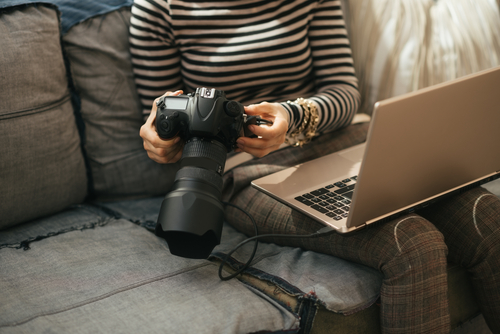
As prices continue to drop and manufacturers strive to develop more user-friend models, DSLR cameras are becoming ever more “in reach” of the average photographer. Indeed it seems as if everyone is getting in on the DSLR fun.
While there are many pros and cons to weigh when switching from a point-and-shoot camera to a DSLR, this article is tailored to the reader that has already made up his or her mind to make the switch. Instead, we will focus on what to look for when selecting the best DSLR for your needs:
Price
Clearly, it makes sense to consider your price point as one of the first factors when narrowing down your options for a new DSLR. With so many options ranging from very affordable on the low end to highly expensive on the professional end, it’s important to hone in on what you’d like to spend on a new camera. When doing so, it also helps to consider what you’ll have to spend on extra lenses, batteries, memory cards, a camera bag, and the like.
Purpose
Whenever you go to buy a new camera, you should stop to as yourself one important question: what am I going to really use it for? Being able to communicate your purpose with a sales representative will often help him or her suggest options that will best suit your needs. In addition, it will help you define what you want to use your camera for and even expand your mind to additional uses that you might not have previously considered.
Size
Of course, if you’re transitioning from point-and-shoot to DSLR, you’ll have to get used to a slightly larger camera body. While DSLRs are generally larger than your standard point-and-shoot camera, there is actually a large variation in size amongst DSLRs themselves. You might not be bothered by a bulky camera and weighty gear if you’re always transporting it in a vehicle, but if you’re planning on carrying gear to remote locations on your back, you might opt for something smaller and lighter.
Compatibility with Existing Accessories
As mentioned earlier, whenever you purchase a new camera you have to think about all the accessories that go with it. If you already own a tripod, camera bag, batteries, memory cards, and more for your old camera, it makes sense to investigate new cameras that are already compatible with your existing accessories. In the case of lenses, evaluating compatibility can help you save a substantial amount of money.
Resolution
While it can be easy to focus on a camera’s number of megapixels, it’s important to recognize that more doesn’t always mean better. DSLRs are available in a fairly wide range of megapixel ratings and this becomes important when considering how you’ll ultimately use your images. If you need smaller files to easily send to friends, more megapixels might not be advantageous. On the other hand, if you’re hoping to print enlargements, more megapixels will ultimately be better.
Overall, there are many factors to be considered when selecting a DSLR camera, but these suggestions give you a few factors to guide your decision making process. Price, purpose, size, compatibility, and resolution are five of the most important features to consider when selecting the new DSLR that will be right for you!